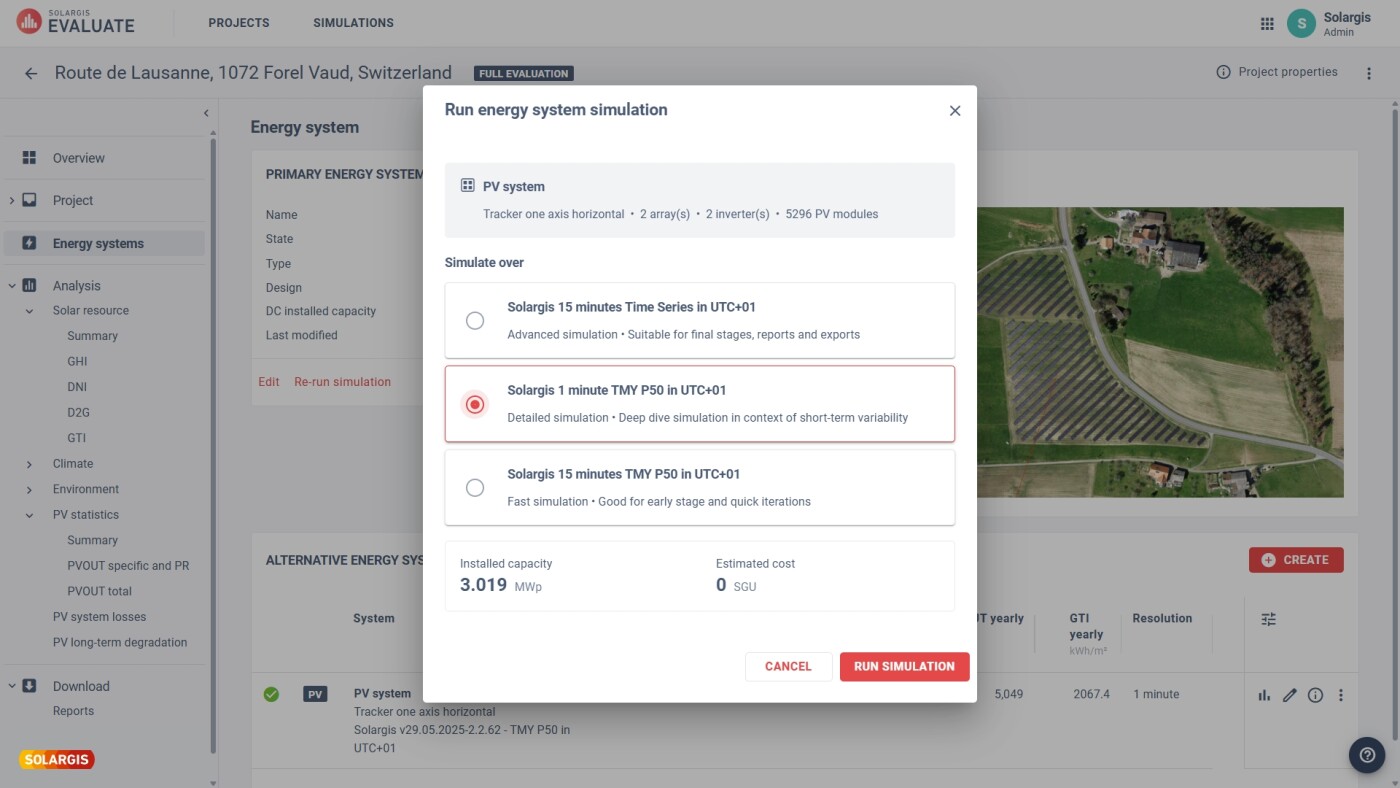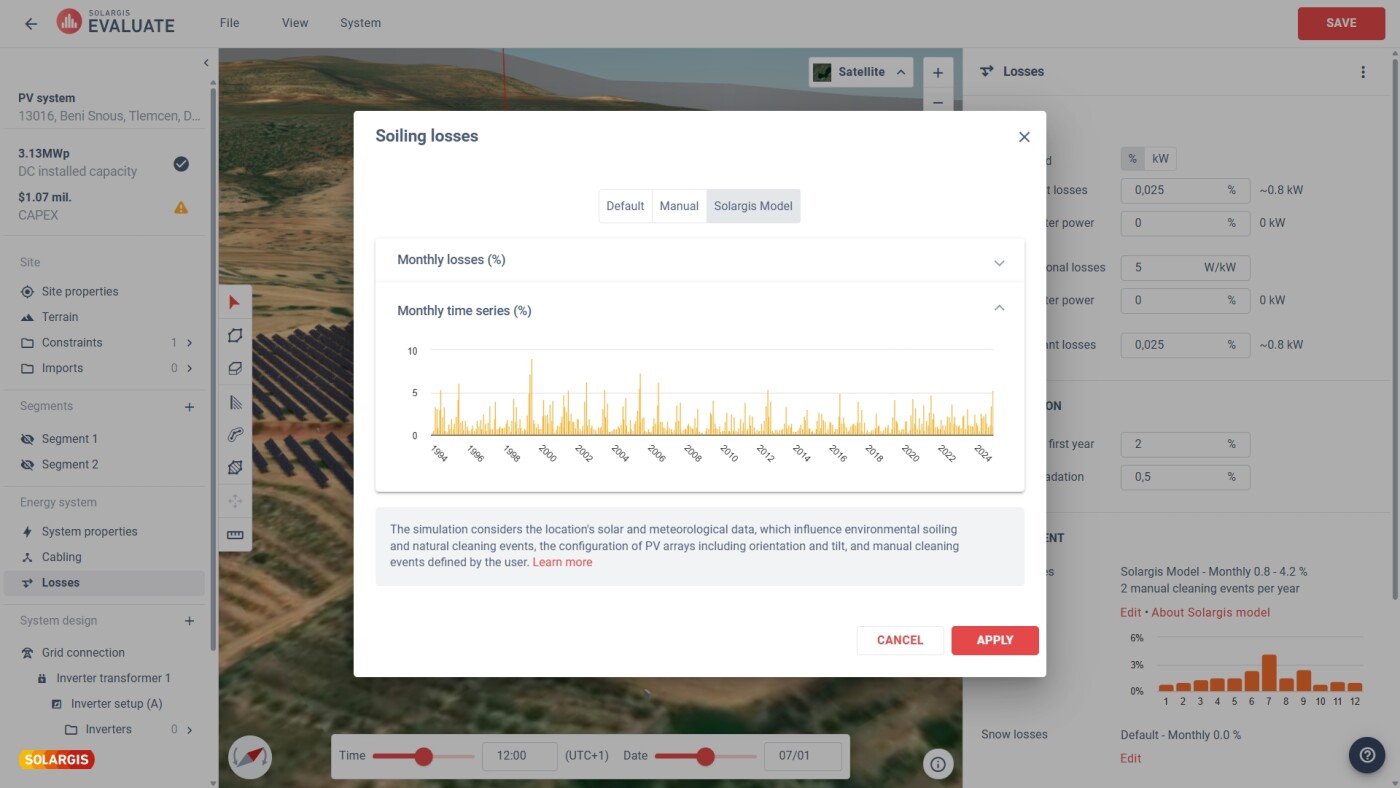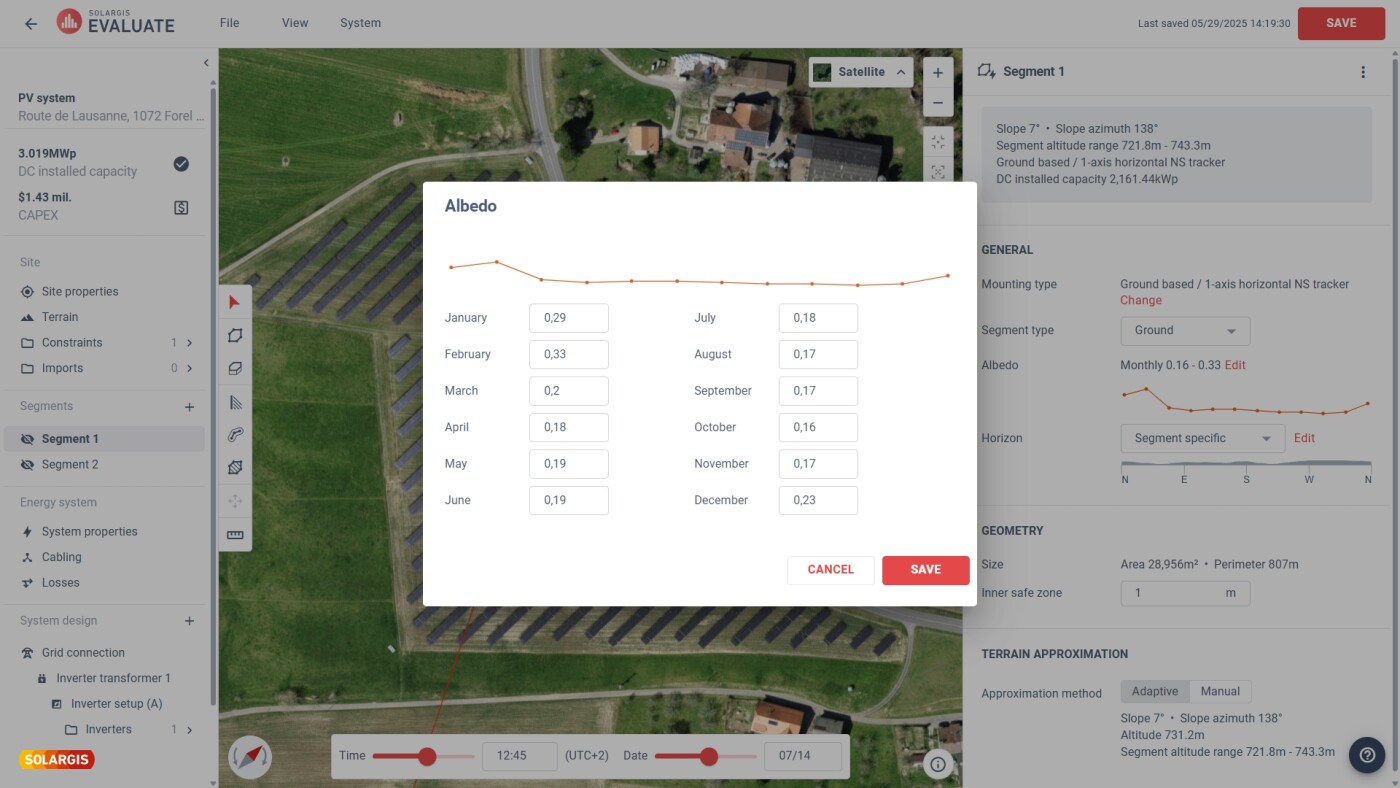The Solargis platform brings all Solargis products under one roof, offering one environment for solar project development. Solargis Prospect and Solargis Evaluate, both part of the Solargis platform, ensure reliable decision-making from early screening to securing project financing.
In Prospect, you can explore and quickly assess and compare multiple locations to identify the most promising ones using reliable solar resource data. Once a location is selected, you can proceed to Evaluate, where high-resolution data is used for detailed project analysis and bankability assessments - all without needing to leave the Solargis platform.






































